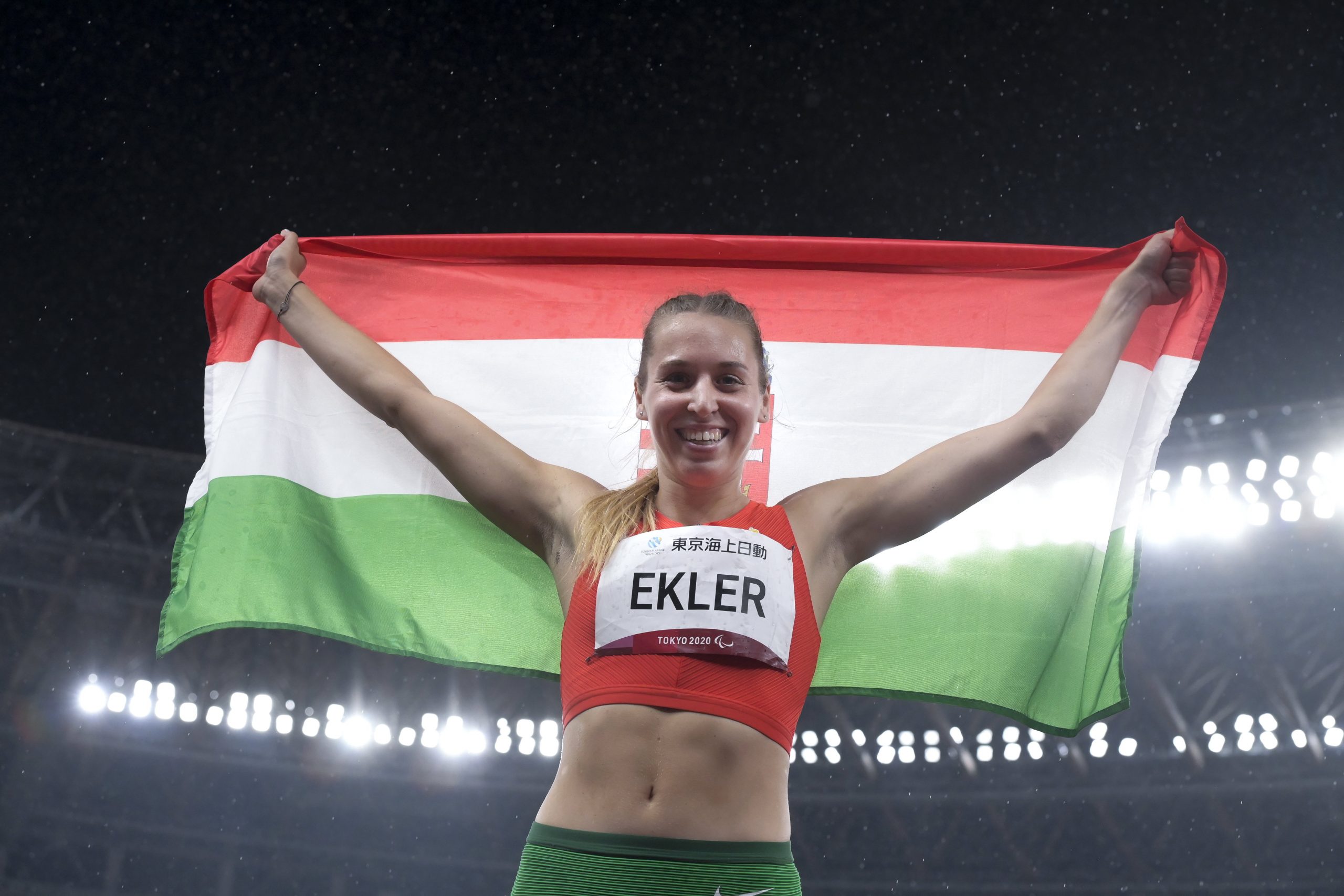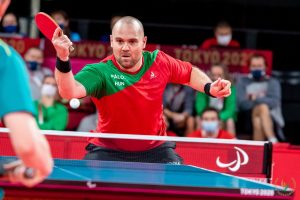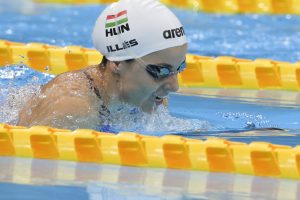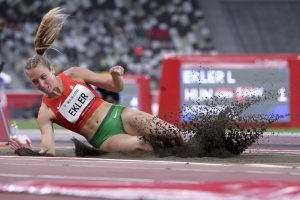
Four gold, two silver, and three bronze medals- these are Hungary’s accomplishments in the Paralympics so far, which puts the team in 19th place on the leaderboard. After seven days passed in the Japanese capital, let’s see the results of which we are most proud.
Amarilla Veres has claimed the first one of the shiniest medals for Hungary after heroically beating her three-time champion Chinese opponent in the finals of wheelchair fencing (épée, category A). This was only the second Hungarian gold ever won in wheelchair fencing after Pál Szekeres’s victory in Atlanta ’96.

Amarilla Veres. Image by Szilárd Koszticsák/MTI
After London, 2012, Péter Pálos managed to fight his way back to the throne in the table tennis S11 category (meanwhile, he also clinched a bronze in Rio), as last Sunday he managed to narrowly overcome his Australian opponent.
And just a mere 26 minutes later, Fanni Illés was able to hit the finish line first in the women’s 100m breaststroke SB4, claiming Hungary’s 150th medal at the Paralympics. She managed to do so after having previously won both the World and European Championships in the same category.
And true to the odds and previous results, the latest gold was brought by Luca Ekler, who won the long jump, beating her own world record in the final. And she will have a chance to add other medals to her collection as she stands a good chance both in the 100 and 200 meter races which are still to come.

Péter Pálos. Image by Szilvi Hoffer/MTI/MPB
Zsófia Konkoly initiated medal victory for Hungary. On the very first day of the Paralympics, she finished 2nd in 400m freestyle swimming.
On Saturday, Richárd Osváth joined her with a reportedly heroic performance, managing to clinch the silver in wheelchair fencing, men’s foil, category A. This was the 36-year-old athlete’s fourth medal in the Paralympics so far after winning two silvers (both in Rio: in foil A and sabre A), and one bronze (in London, foil A).

Fanni Illés. Image by Szilárd Koszticsák/MTI
Alexa Szvitacs claimed Hungary’s first bronze in table tennis (women’s singles class 9) after narrowly being beat in the semifinal.
A mere one point difference decided the bronze in women’s foil in wheelchair fencing. Luckily, the Hungarian team, consisting of Zsuzsanna Krajnyák, Éva Hajmási, Boglárka Mező, and Gyöngyi Dani managed to clinch third place.
Mező’s story is perhaps one of the touchiest ones on the team, increasingly featured in Hungarian media too: at the age of 15 she attempted suicide (having jumped off a high building), resulting in the paralysis of her right leg. However, she managed to find her way back, and besides her sports successes, she earned a law degree and is now working for the Budapest Police Headquarters (BRFK). BRFK workers, including Budapest’s police chief, greeted her at the airport after her arrival.
After shooting kick-started on Monday, Krisztina Dávid was similarly able to finish on the podium too after she bagged a bronze in women’s 10m Air Pistol SH1 on Tuesday.
Before the kickstart of the event, the Hungarian Paralympic Committee’s (MPB) president expected at least 15 Hungarian medals, including 3 to 5 gold at the Games, the former of which is still reachable, while the latter goal is already completed.

Luca Ekler. Image by Szilárd Koszticsák/MTI
In addition, although in terms of total number of medals this is not the case (yet), in terms of configuration, the Tokyo Paralympics is already one of the most successful ones ever: it was back in Sydney in 2000 where team Hungary won at least four gold medals for the last time. Ever since, two golds were the maximum, while more than four were won only twice in Paralympics history since 1972: in Atlanta ’96 (5 golds) and New York ’84 (12 golds).
The Paralympics closing ceremony will be held on the 5th of September (this coming Sunday).
featured image: Luca Ekler; via Szilárd Koszticsák/MTI